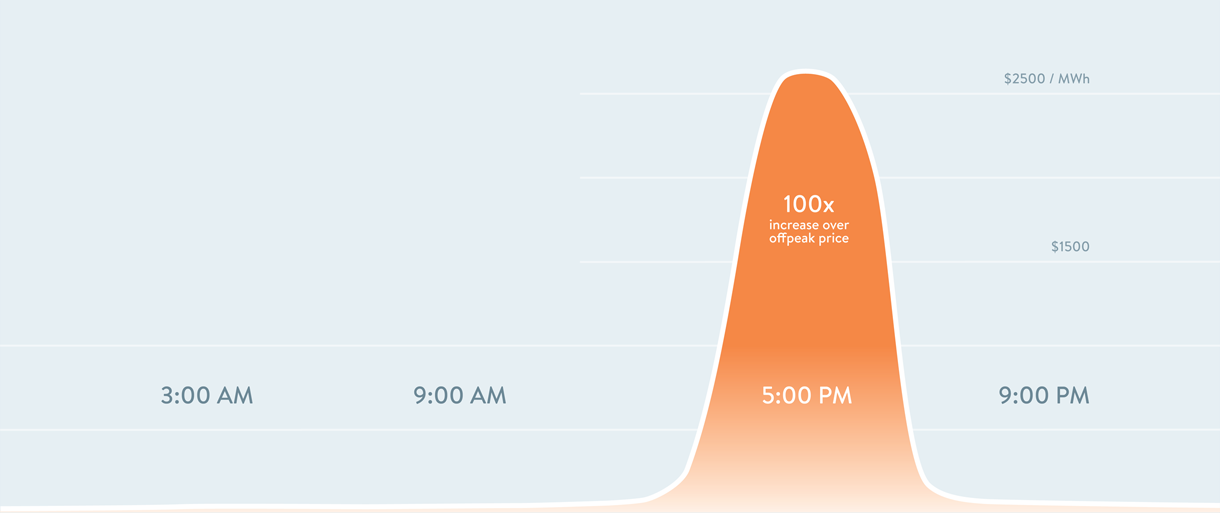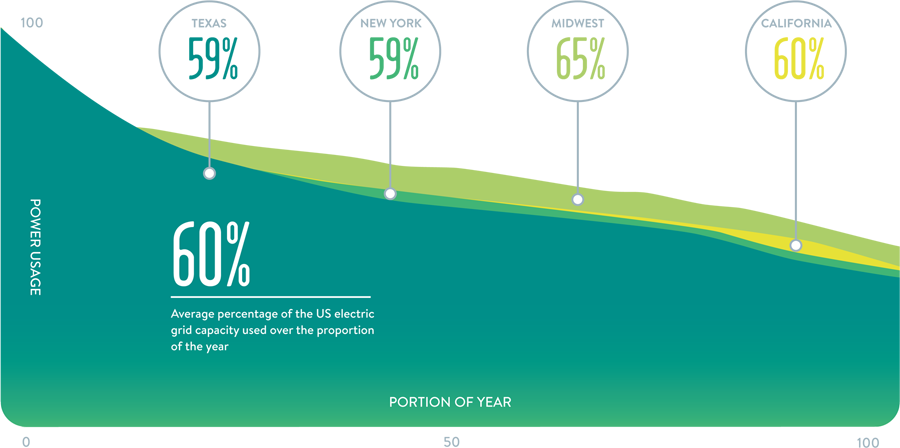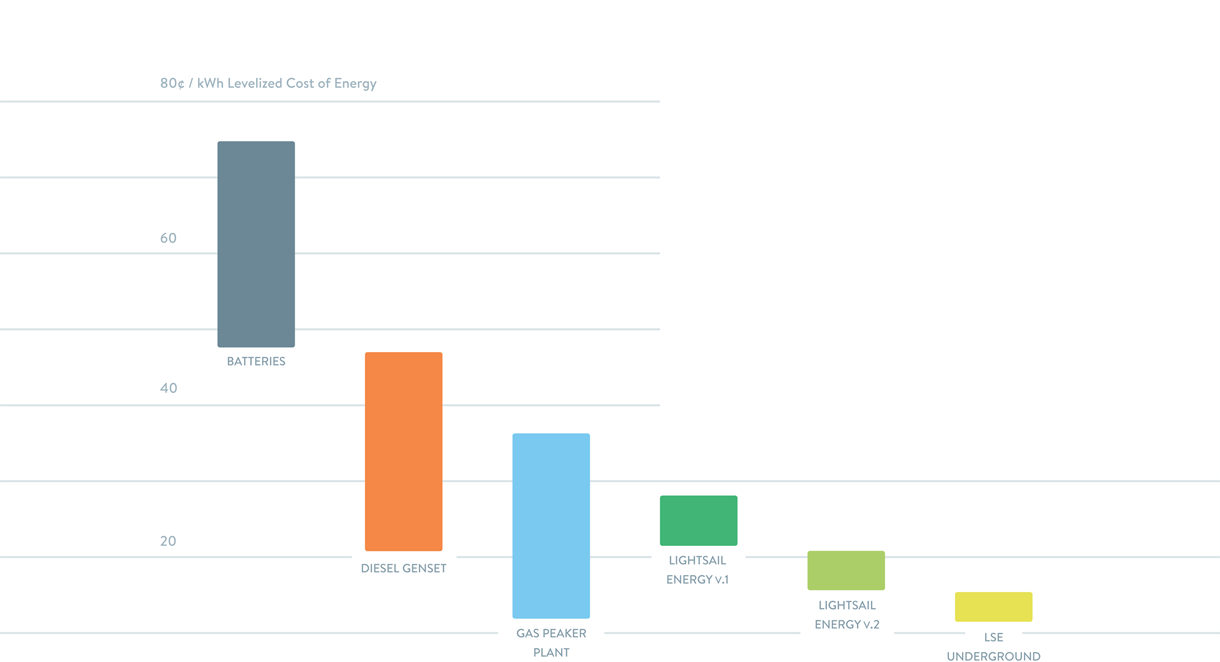$13,700 Billion
The expected cost of electric infrastructure upgrades worldwide over the next two decades is almost $14 trillion. More than 30% of this investment serves a need that could be economically met with energy storage at the right price.

The Trillion Dollar Formula
If it were less expensive to store and deliver low-cost, off-peak energy on demand than it is to make more of it with conventional peaker plants, the energy landscape would change dramatically.
Clean, intermittent power
+
Near fluctuating demand to meet peaks
<
Inefficient plants throttled to meet peak demand
+
Extra wires, transformers, etc. to supply peak power
The Cost of Wind Power Worldwide
In much of the world, the lowest cost sources of energy are green. Yet since there is little capacity to store energy, green power is sold when available, instead of when it’s most valuable.

A Hot Day in Texas
Electricity prices skyrocket on a hot day in Texas. What if wind or solar power could be stored cheaply and delivered when it’s needed? More profit for the wind and solar farms, low cost energy for the users, greener energy for the world.

Nearly Half of the Electric Grid Capacity is Underused
Inefficient diesel and gas peaker plants supply electricity during the times of greatest demand. The grid resources (wires, transformers, etc.) required to transport this peak power are left underutilized during non-peak times. Low-cost storage can increase grid utilization without adding more wires.

Power With Storage at the Point of Demand
By storing energy near end-users, peak demand can be shifted to off-peak times in order to reduce the cost of grid upgrades.
Lowest Cost
Dispatchable Power
Our first generation product will enable renewable resources to provide cheaper electricity than that produced by diesel generators, the fossil fuel-based competitor to beat on islands and isolated grids.
Our second generation product will be the first energy storage system to outcompete gas peaker plants. It will drive massive adoption of green energy worldwide.

Assumptions
Variance Analysis
Business model robust to variations: capital cost, general inflation, energy inflation, gas price, off-peak costs, peaker efficiency, round-trip efficiency
